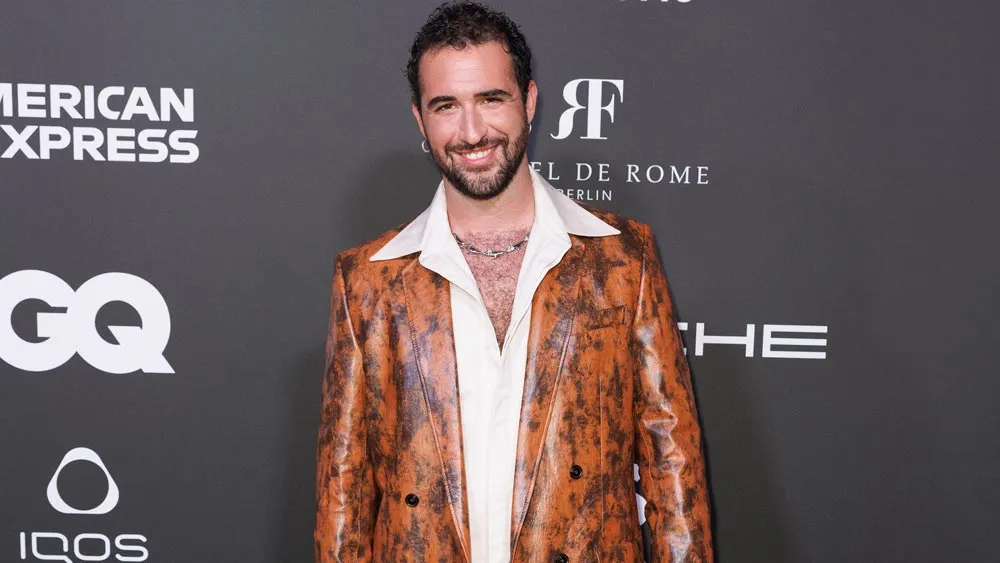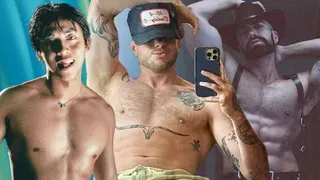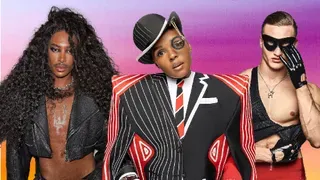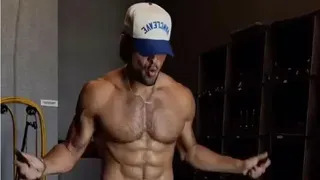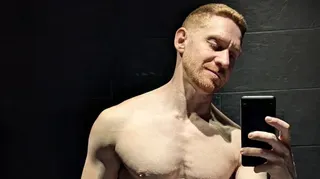September 27, 2021
Scribbles Jensen on the Evolution of Erotic Art
Ryan Leeds READ TIME: 5 MIN.
Scribbles Jensen had a hidden talent. For years, the Wyoming native and current New Yorker knew that he could write, but he never believed in his visual art skills. After one class, however, he was well on his way to claiming artist status. Ultimately, it led him to produce his own gay erotic art exhibition.
"Other Men... Other Lands" premiered September 10 and runs through November 13 at Brooklyn's Shag Shop. Proceeds from the sales will help the local business and GLITS, a nonprofit that provides resources to transgender individuals.
EDGE Media Network recently spoke on the phone with Jensen about his artistic journey, his influences, and thoughts on gay erotic art.
EDGE: When did you discover your artistic ability?
SJ: I sort of discovered that I could draw in 2013. I had some personal issues, which delayed that, but I went to my first live drawing a few years later at New York City's Leslie-Lohman Museum of Art. That really connected me to the community of erotic male artists in New York City. They are a welcoming and kind bunch of people.
EDGE: Was erotic art always something of interest for you or did you just pick it up later in adult life?
SJ: I didn't know that I could draw, but I was always deeply moved by some of the art I saw in museums and was fascinated by live drawing sessions. Marina Abramović had an exhibit at the Museum of Modern Art, and one of the works was called "Self Portrait with Skeleton" where the artist laid on a table with a skeleton on top of her. As a writer, I filled three journals just on that single work. It was an important moment for me.
Growing up Mormon in Wyoming, the notion of looking at a man I found attractive was always difficult for me. Going to erotic studios helped me overcome any shame and intimidation I had.
EDGE: How do you differentiate between erotic art and pornography?
SJ: There's a thin line between the two, but in general, the idea of something being drawn is different from something being photographed or filmed. I'm not too concerned with the difference.
EDGE: What is your opinion on censorship of pornography and/or erotic art?
SJ: That's been a giant problem within social media and how it defines the platform's community standards. Just overnight, people can have their accounts suspended. Since many artists sell their art and reach community through those means, it can affect how they make a living.
EDGE: How have these social media platforms changed erotic art for both artists and models?
SJ: Several of my artist friends have censored their own images on social media and will create an uncensored paywall for the full images. A lot of models that we employ in the artists community are actors. During the shutdown, it was critical for many of them.
Erotic art dates back tens of thousands of years. Has there been a change in the level of provocation over the years?
SJ: I'm glad you mentioned the origin because erotic art is, in fact, an ancient practice. There is something transgressive about it. Throughout history, there have been times when it has been more provocative and other times when it's been more repressed. We have quite a bit of erotic art from the Victorian age that has survived.
EDGE: What artists have influenced you?
SJ: Initially, it was photography by people like Tom Bianchi and Robert Mapplethorpe – along with German expressionists like Egon Schiele.
EDGE: Obviously, there are societal taboos around erotic art. Do you have any ideas or suggestions on how to break them down?
SJ: The concern that people should have is consent between artist and subject. Both parties should absolutely be treated with respect. As far as a taboo, I don't think I want to get rid of the taboo around it. I think that all sexuality must have a level of transgressiveness to it. There is a certain joy in pursuing the forbidden.
EDGE: How can readers find other erotic art or become involved in drawing it?
SJ: There is a great show in Kingston, New York called Barnwood, October 15-16. The Leslie-Lohman Museum of Art hosts virtual drawing sessions, and there is also an art store called Maison 10, which encourages artists and consumers. Both are in Manhattan.
Want to see more of Scribble Jensen's work? Click Here.
